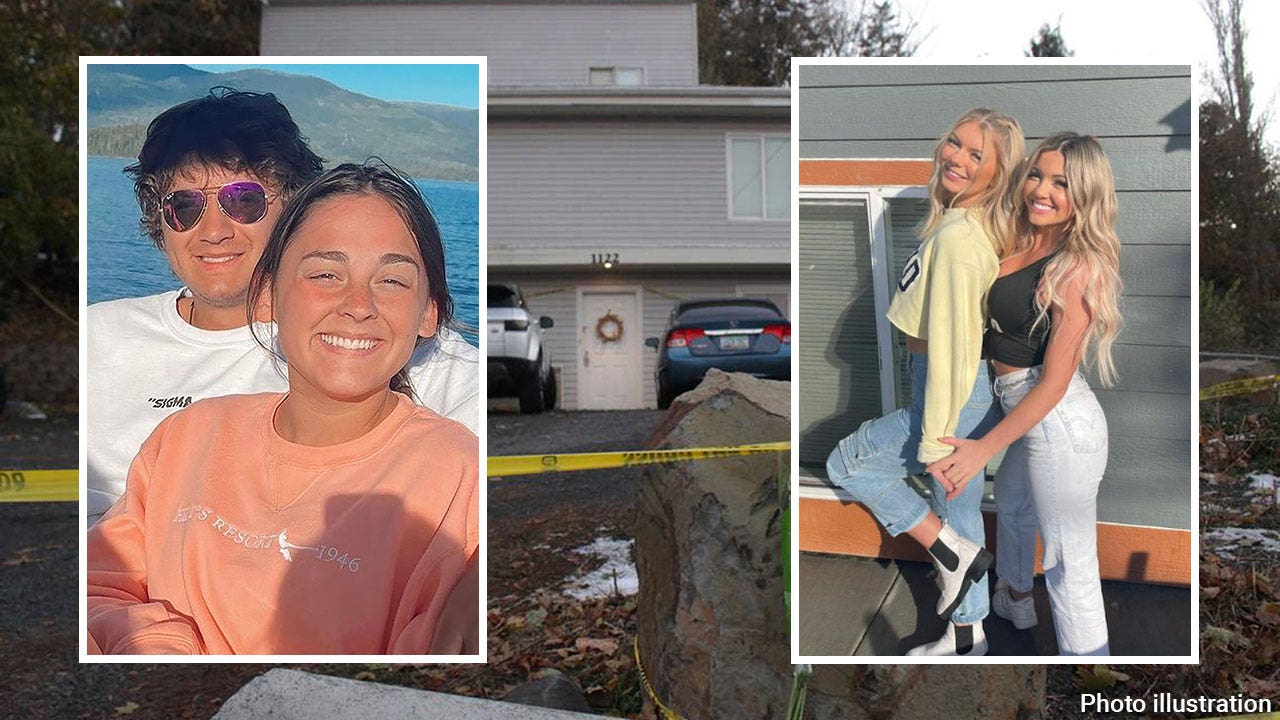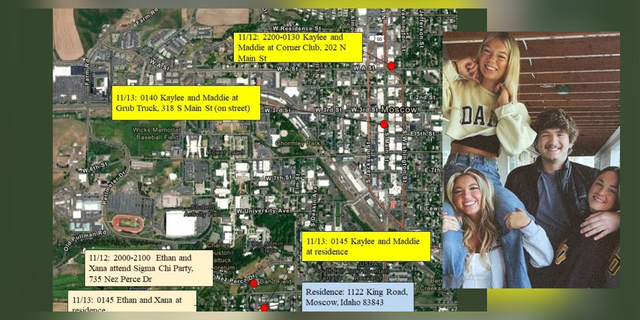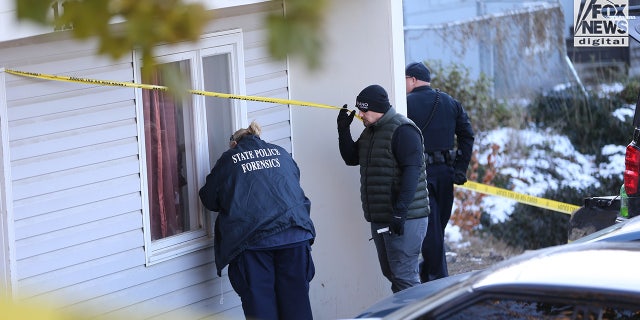Damn they really don't know anything at all. This thing about to go cold. Killer only getting caught if he hits again.
The forensics not gonna help They lived in a party house that had 50 people over every week and the police didn't lock the crime scene down
this detective went in on them
Ten days after four University of Idaho students were murdered, classmates say the 'party house' they lived in may have been contaminated with outside DNA.

www.foxnews.com
Idaho police ripped for handling of murders after 10 days with no suspect: 'I give it an F'
H
)
MOSCOW, Idaho – Experienced homicide investigators are voicing concerns that initial crime scene management was lacking in the quadruple stabbings of a group of University of Idaho students earlier this month – especially after 10 days have passed without a suspect since the savage slayings and classmates warn the "party house" the victims lived in could contain large amounts of unrelated DNA.
For their part, Moscow police have invited help from dozens of state police members and more than 40 FBI personnel.
Goncalves and Mogen were last seen at the Corner Club – a dive bar popular with the college crowd. It's friendly, cozy and packed with sports on TV, a few icy steps below street level and warm inside.
One fellow University of Idaho student, who said he knew the victims, described their off-campus rental as a "party house."
"It's the heart of Greek life on campus," he told Fox News Digital Wednesday, and sees capacity crowds on most Fridays and Saturdays.
But the victims also lived in what he described as "a party house," which he worried could complicate forensic testing.
"There’s DNA everywhere," he said.
According to Joseph Giacalone, an adjunct professor at John Jay College of Criminal Justice in New York and a retired NYPD sergeant, there could be a huge amount of unrelated DNA in the house.
"If you had to use Luminol and a blue light in there, it probably looks like a Jackson Pollock painting," he told Fox News Digital.
Luminol is a chemical that reacts with and reveals even small traces of the presence of blood.
"They could have had a party last week between 40, 50 people, so hair evidence, all that stuff becomes very suspect," he said. "Because of the dynamics of what you're dealing with here, you have to rely on phone records, internet records and surveillance video to try to piece this thing together."
Still, some DNA evidence could help the investigation, he said, including blood that doesn't belong to the four victims and DNA left under their fingernails or through other defensive injuries.
"You hope that the victims' hands were all bagged at the time before the bodies were moved out of the house," he said. "That's the way it should have been done, especially when you have a violent attack with a knife – the chances of defensive wounds, defensive strikes at the perpetrator, are pretty good."
That is, if the suspect's DNA is in a law enforcement database.
"They honed in on the crime scene, hoping they get a hit on DNA," former Miami-Dade County homicide detective Pat Diaz told Fox News Digital. "Well, what happens if this guy's not in the system? What happens is this guy's a psycho that's never been caught?"
Police could have locked down the entire neighborhood before students went home for Thanksgiving break, he said.
"You should have a thousand interviews," he said. "You should have been talking to everybody that even walked in, every ant that walked that street, should have their name."
Both experts said the early police response was concerning – it was too small, too many people came and went and cellphone data should have been an early priority.
"The crime scene here, the lack of protocol, the defense attorney is going to have a field day with this," Giacalone said. "I would give it an F."
There was no gatekeeper securing the scene, he said – someone keeping track of who came and went. A comprehensive list could help investigators sort through evidence inadvertently contaminated by officers just by being present.
State police forensics look for clues in Moscow, Idaho on Monday, November 21, 2022. Four University of Idaho students who were slain on November 13 in this house. (Derek Shook for Fox News Digital)
There was no gatekeeper securing the scene, he said – someone keeping track of who came and went. A comprehensive list could help investigators sort through evidence inadvertently contaminated by officers just by being present.
"That's called evidence dynamics, where you don't do it on purpose, but you're going to
contaminate the crime scene just by entering it," he said. "You try to do as minimal as possible, but the idea is to get those [samples] from people to make sure that some of the cops that were at the scene weren't the donors. But if you don't have a list of who was there, this creates a huge problem."
IDAHO COLLEGE MURDERS: EXPERTS LEFT 'STUNNED' BY MISSTEPS IN INVESTIGATION
He also took issue with how close police parked to the house and how many people went in and out without wearing sanitized Tyvek suits.
"The first day, you see all the cars public right in front of the house and the door, within three feet of the front door, that should never happen," he said.
No suspects, no motive
Diaz also said he worried police took too long to canvas the surrounding area and should have a comprehensive list by now of everyone who was nearby on the morning of the murders.
"This was not random," he told Fox News Digital. "I think they were targeted. I think they saw them out, or they’ve seen them around."
A thorough examination of the surrounding area is important because the suspect could have dropped blood or other evidence on his way out, Diaz said.
"Remember the Virginia Tech murder case?," he said. "When he did the murder, he came down the stairs. There was a blood trail down the stairs, out the doorway."
More key evidence will come from pinging surrounding phone towers, he said, if it hasn't been collected already
Both experts said they believed the attack was targeted.
"Stabbing is an up close and personal kind of thing," Giacalone said. "It's violent, especially when you deal with overkill. This is why I hang my hat on that this is a perpetrator who knows the victim."
He also suggested there could have been more than one assailant.
What police are revealing
Investigators have slowed their release of new information on the case as it drags on without a publicly identified suspect.
To Giacalone, that's an improvement over earlier overshares from the coroner – but he's worried local investigators may have brought in help from the state and FBI a little too late. There's a "golden hour," the hour after the bodies are discovered, that is most crucial for investigators because the suspect is the closest to the scene at that time.
University of Idaho victims Madison Mogen and Kaylee Goncalves were close friends. (Instagram/ @kayleegoncalves)
"The police department always knows a lot more about what's going on than they let on," he said. "But you've got to remember, too, this is a place where there's not a whole lot of homicide that happens. And you kind of get a little worried about that when you have a small department trying to handle this huge case
"The police department always knows a lot more about what's going on than they let on," he said. "But you've got to remember, too, this is a place where there's not a whole lot of homicide that happens. And you kind of get a little worried about that when you have a small department trying to handle this huge case."

 Brothers, if we learn something from this case is to not respond to 3 AM links.
Brothers, if we learn something from this case is to not respond to 3 AM links.
 Killer trying to be The One on some Jet Li shyt
Killer trying to be The One on some Jet Li shyt



